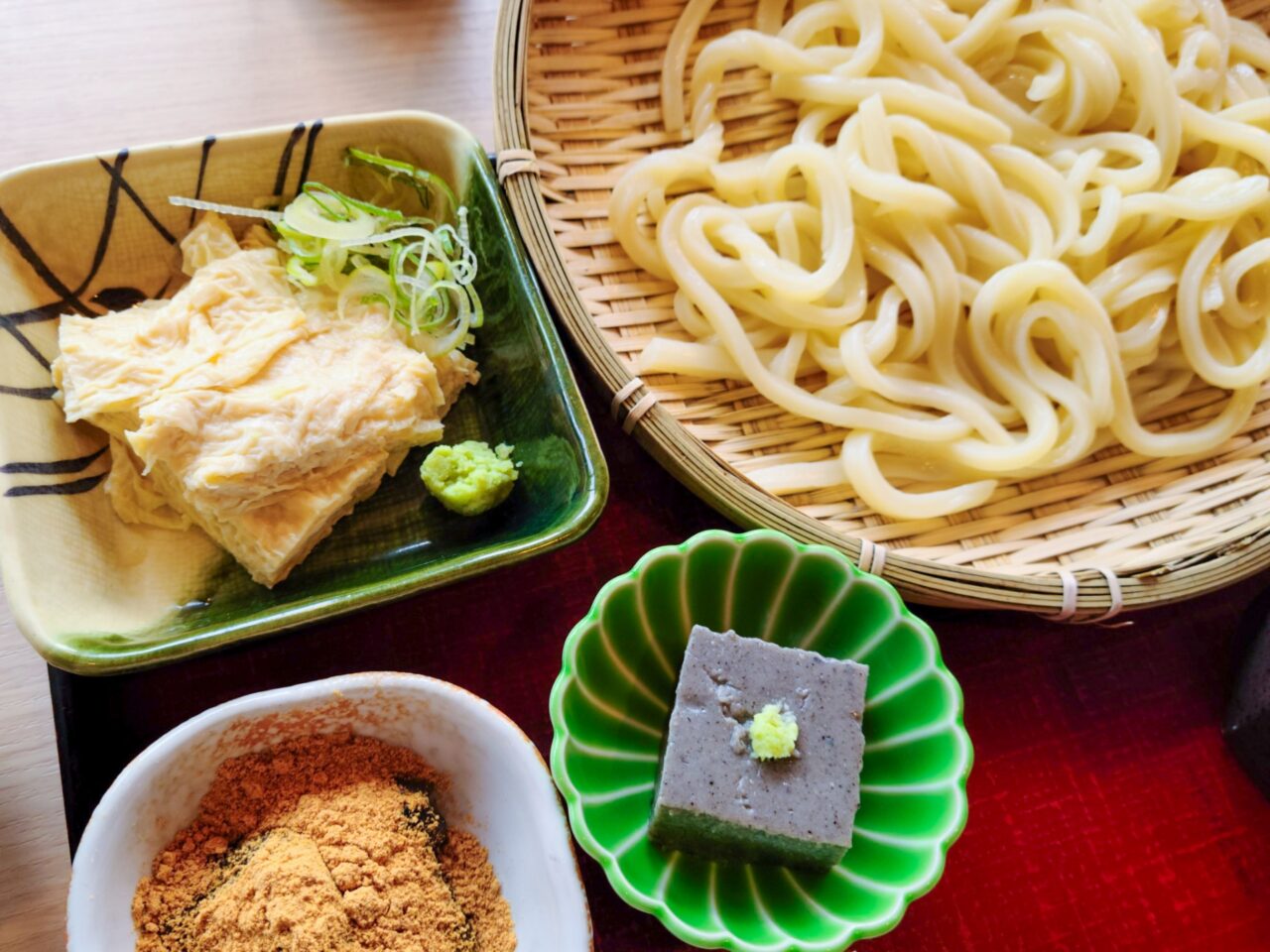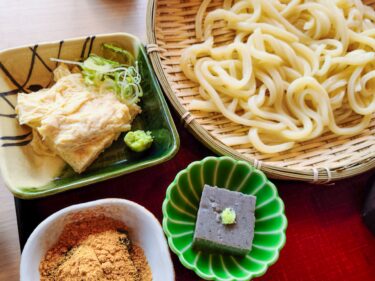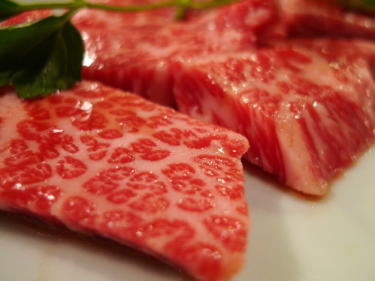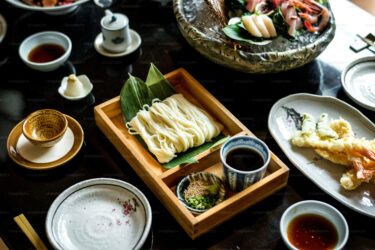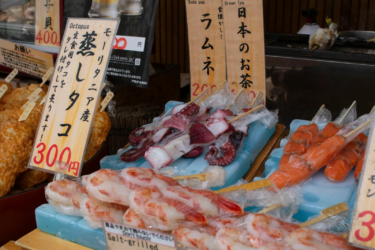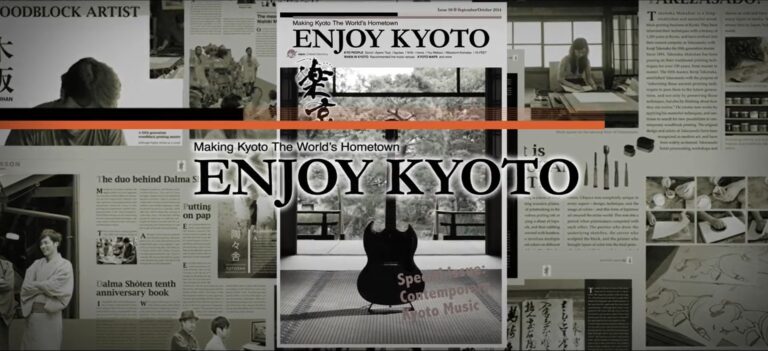Kyoto is famous for its refined cuisine, but sometimes, all you need is a simple, satisfying bowl of noodles. Udon and soba are two of Japan’s most popular noodle dishes, and Kyoto has plenty of excellent spots to try them. Perfect in warm or colder months, whether with a steaming hot bowl of udon or chilled soba with a dipping sauce, Kyoto’s noodle shops offer a variety, with both classic and local specialties. Let’s get into the differences between udon and soba, where to find the best places to eat them in Kyoto, and what you need to know about the right way to eat them.
Udon vs Soba: The Basics
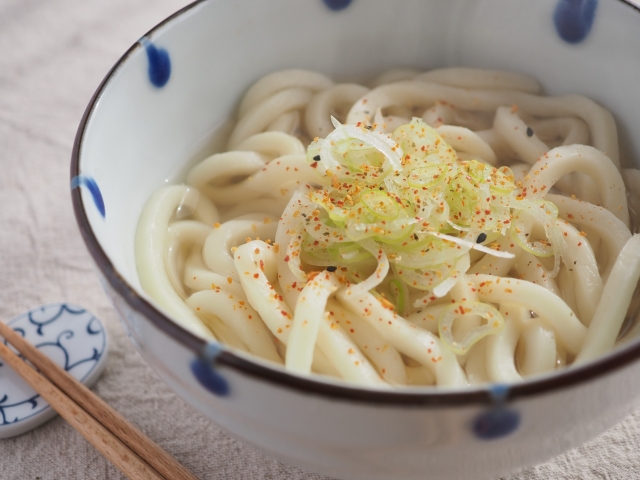
Before diving into Kyoto’s best udon and soba restaurants, let’s take a look at some of the basic differences between these two noodles. Udon is a thick, white wheat noodle known for its soft and chewy texture. It’s typically served in a light broth made from dashi (Japanese soup stock), soy sauce, and mirin, but it can also be eaten cold with a dipping sauce.
Soba, on the other hand, is a thinner noodle made from buckwheat flour, which gives it a slightly nutty flavor. Like udon, it can be served in a hot broth or enjoyed cold as zaru soba, where the noodles are dipped into a separate sauce. Soba is often considered the healthier option due to its lower calorie count and higher fiber content.
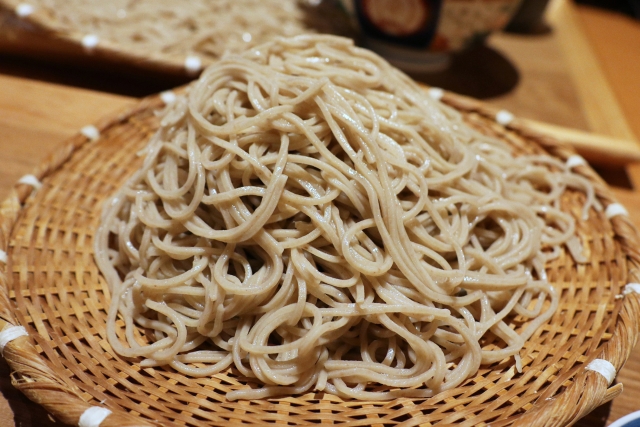
The broth used in Kyoto-style udon and soba noodles is light in color but rich in umami, thanks to the use of kombu (kelp) and bonito flakes. Soba in Kyoto is frequently served with local ingredients like yuba (tofu skin) or nishin (sweet-simmered herring), both of which are specialties of the city. You can find more on Kyoto’s soba and udon specialties below, but first, let’s take a look at some of the best noodle shops in the city.
Best Udon Restaurants in Kyoto
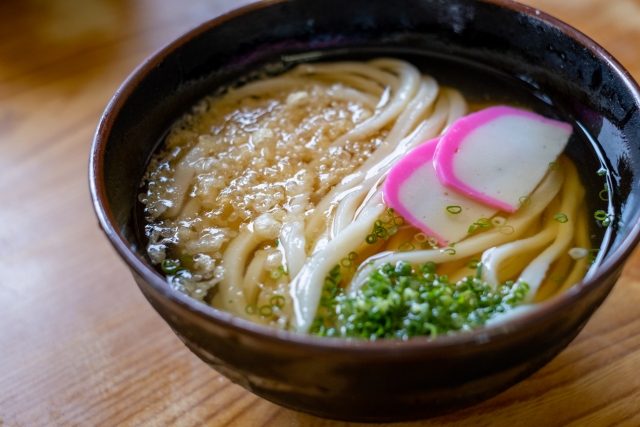
Omen (Near Ginkaku-ji Temple)
Omen is a well-known udon shop near Ginkaku-ji Temple (the Silver Pavilion). Their signature dish is udon served with a variety of fresh vegetables and sesame seeds that you mix into your dipping sauce. It’s a great place for those who want something light yet flavorful.
Yamamoto Menzou (Near Heian Shrine)
This restaurant is famous for its thick, silky-smooth noodles and deeply flavorful broth. Due to its popularity, there are often long lines, so it’s best to arrive early to secure a spot.
See Yamamoto Menzou on Google Maps
Okakita (Near Heian Shrine)
This udon shop has been in business since 1940, and serves udon in a signature broth that took over a decade to perfect. Their tempura udon is a must-try.
Best Soba Restaurants in Kyoto
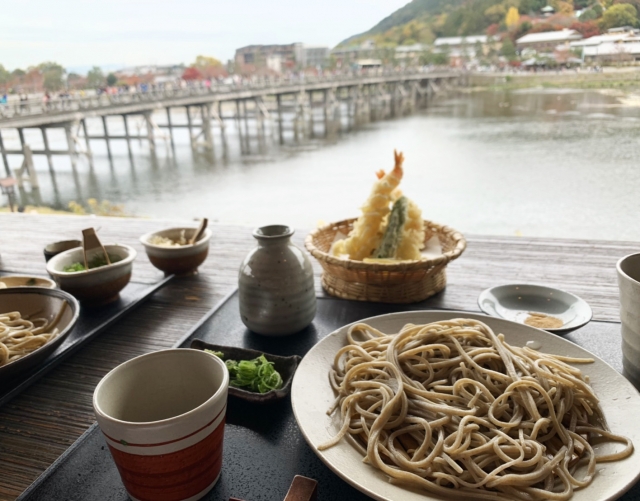
Honke Owariya (Downtown Kyoto)
Established in 1465, Honke Owariya is not only Kyoto’s oldest soba shop and once a favorite of the imperial family – it’s the oldest restaurant in Kyoto. Their soba noodles are made fresh daily, and the broth is light yet packed with flavor. Honke Owariya’s Hourai soba, a multi-tiered dish with various toppings, is a great way to sample different flavors.
See Honke Owariya’s English website
See Honke Owariya on Google Maps
Sohonke Nishin Soba Matsuba (Downtown Kyoto)
Founded in 1861, Matsuba is the birthplace of nishin soba (invented in 1881), a Kyoto specialty featuring soba noodles topped with a sweet-simmered herring. This dish has been a local favorite for over 150 years. Matsuba is conveniently located in downtown Kyoto, so it’s a great place to try it.
Arashiyama Yoshimura (Arashiyama Area)
Located near the Togetsukyo Bridge in Arashiyama, this restaurant serves fresh soba in a peaceful setting overlooking the Katsura River. It’s a great spot for a relaxing meal after exploring the bamboo forest.
See Arashiyama Yoshimura on Google Maps
Kyoto’s Unique Udon and Soba Dishes
Nishin Soba
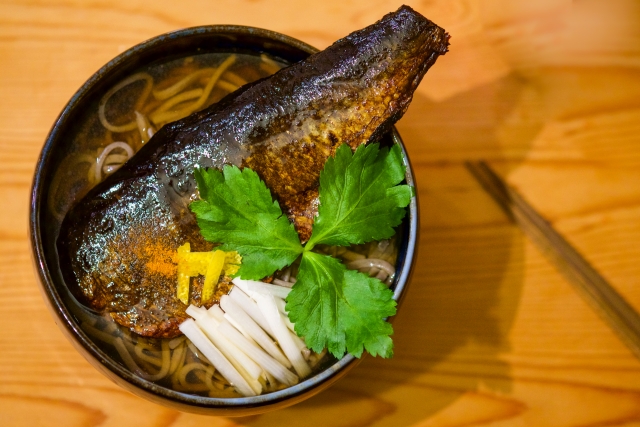
In addition to classic udon and soba dishes, Kyoto has a few noodle specialties that are unique to the city. One of the most well-known is nishin soba, which features soba noodles topped with a fillet of herring that has been simmered in a sweet soy sauce mixture. The rich, slightly sweet flavor of the fish pairs well with the light and delicate soba broth in a uniquely Kyoto way.
Yuba Udon & Soba
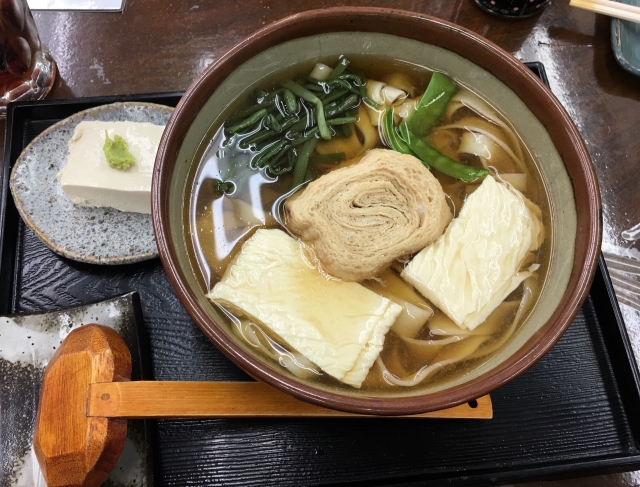
Another Kyoto specialty is yuba udon or yuba soba, which incorporates yuba, or tofu skin, into the dish. Yuba is a delicacy in Kyoto’s vegetarian cuisine and adds a soft, slightly creamy texture to the noodles. This one may be slightly less common, but it’s a simple and delicate flavor.
Cha Soba
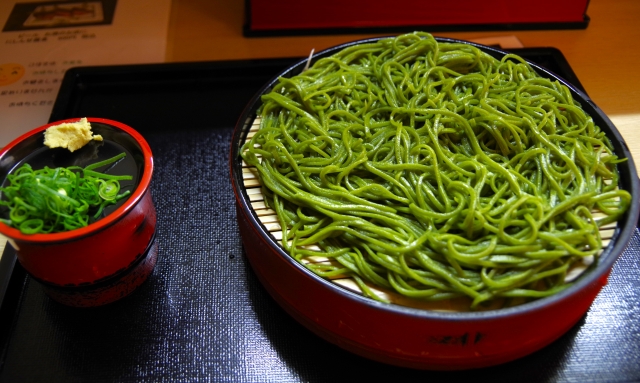
Can you handle green food? If you want to try something a little different, cha soba (“cha” meaning “tea”) is a unique variation on your typical buckwheat noodle made by kneading green tea powder into the soba dough. This gives the noodles a green tint and a very subtle tea flavor. Given Kyoto’s deep connection to matcha culture, it’s no surprise that this dish is widely available in the city, and it’s a fun meal to try while you’re here.
How to Eat Different Types of Udon and Soba
If you’ve never had udon or soba in Japan before, there are a few things you might want to know when ordering and eating these noodles. One of the most important decisions is whether to have your noodles hot or cold. Soba is often eaten cold in the summer and hot in the winter, while udon is typically enjoyed hot year-round. It’s up to you which you’d prefer to eat, and you may want to try both, just to experience the difference!
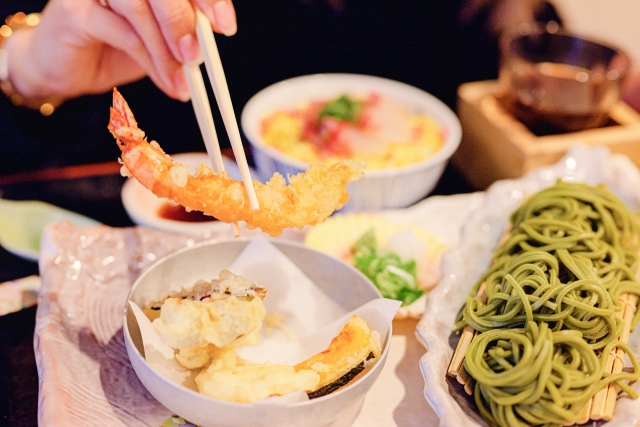

If you’re ordering zaru soba (cold soba), the correct way to eat it is to lightly dip the noodles into the tsuyu (dipping sauce) before slurping them up (slurping is completely acceptable in Japan!),. Many restaurants provide condiments such as wasabi, green onions, grated daikon, and tempura bits, which can be added to the dipping sauce or broth before you dip to customize the flavor. As anyone who’s ever cleared out their sinuses a little more than they intended knows, it’s best to add the wasabi in small bits at a time to test the flavor.
At casual eateries, it’s often polite to return your tray after eating. Some restaurants may also have self-service water or tea stations, so be sure to check before ordering. Soba restaurants may also offer sobayu, the hot water in which the soba noodles were boiled. This can be mixed with any remaining dipping sauce to create a light, flavorful broth to drink at the end of your meal, but this is often optional.
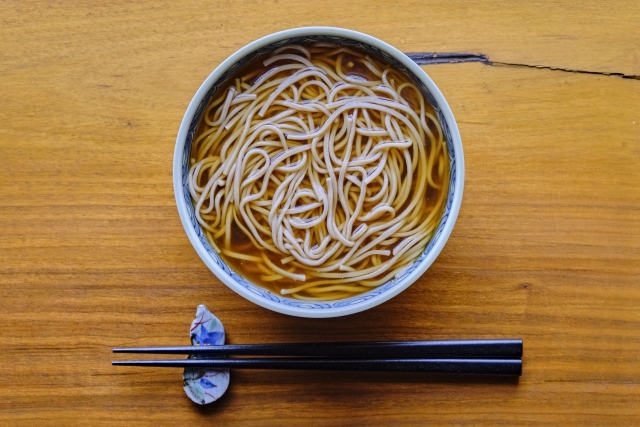
You may need to brush up on your chopstick skills to handle the slippery noodles, but Kyoto is a fantastic place to enjoy udon and soba. If you’re exploring the city, make sure to stop by one of these shops to experience a true taste of Kyoto.

